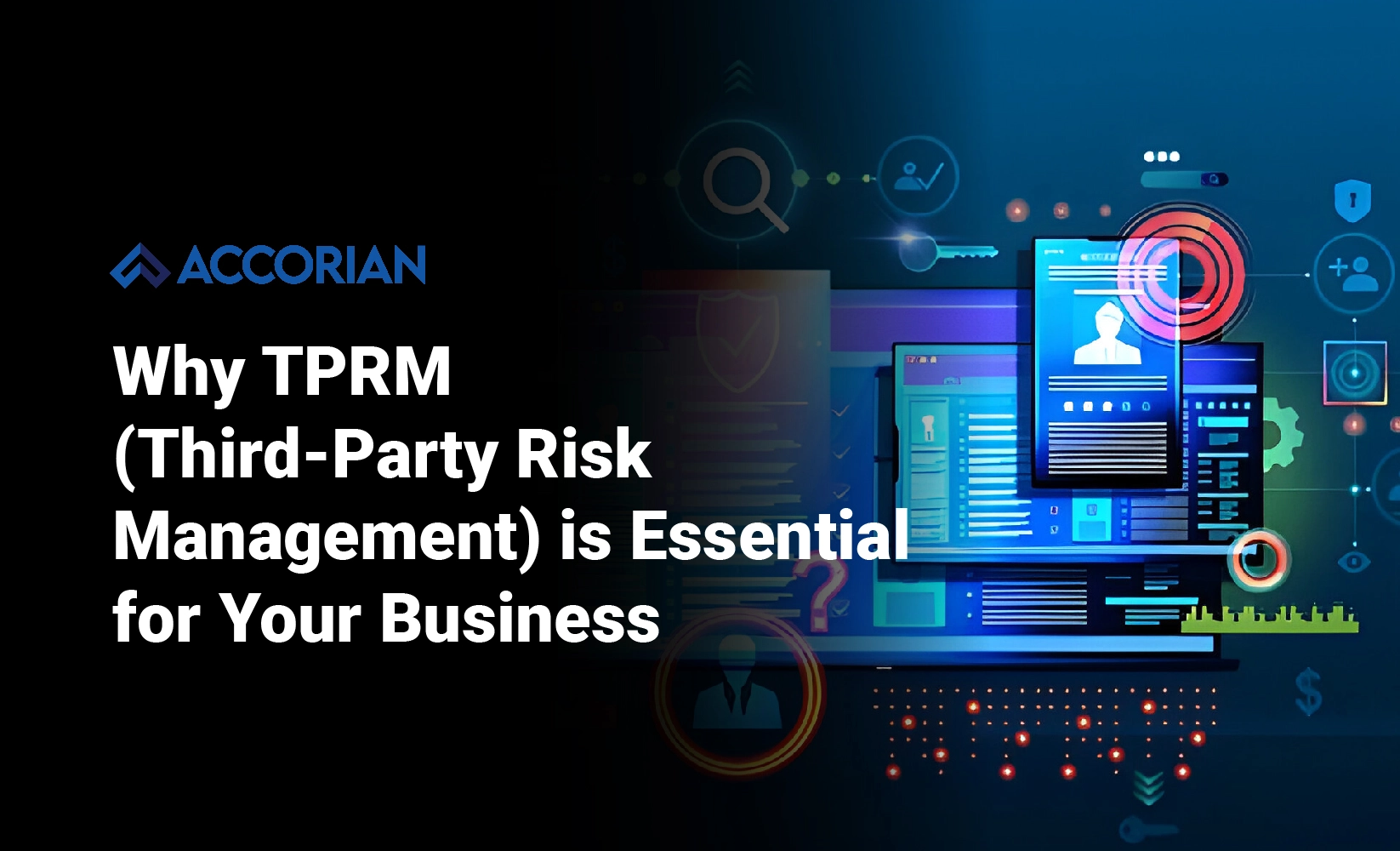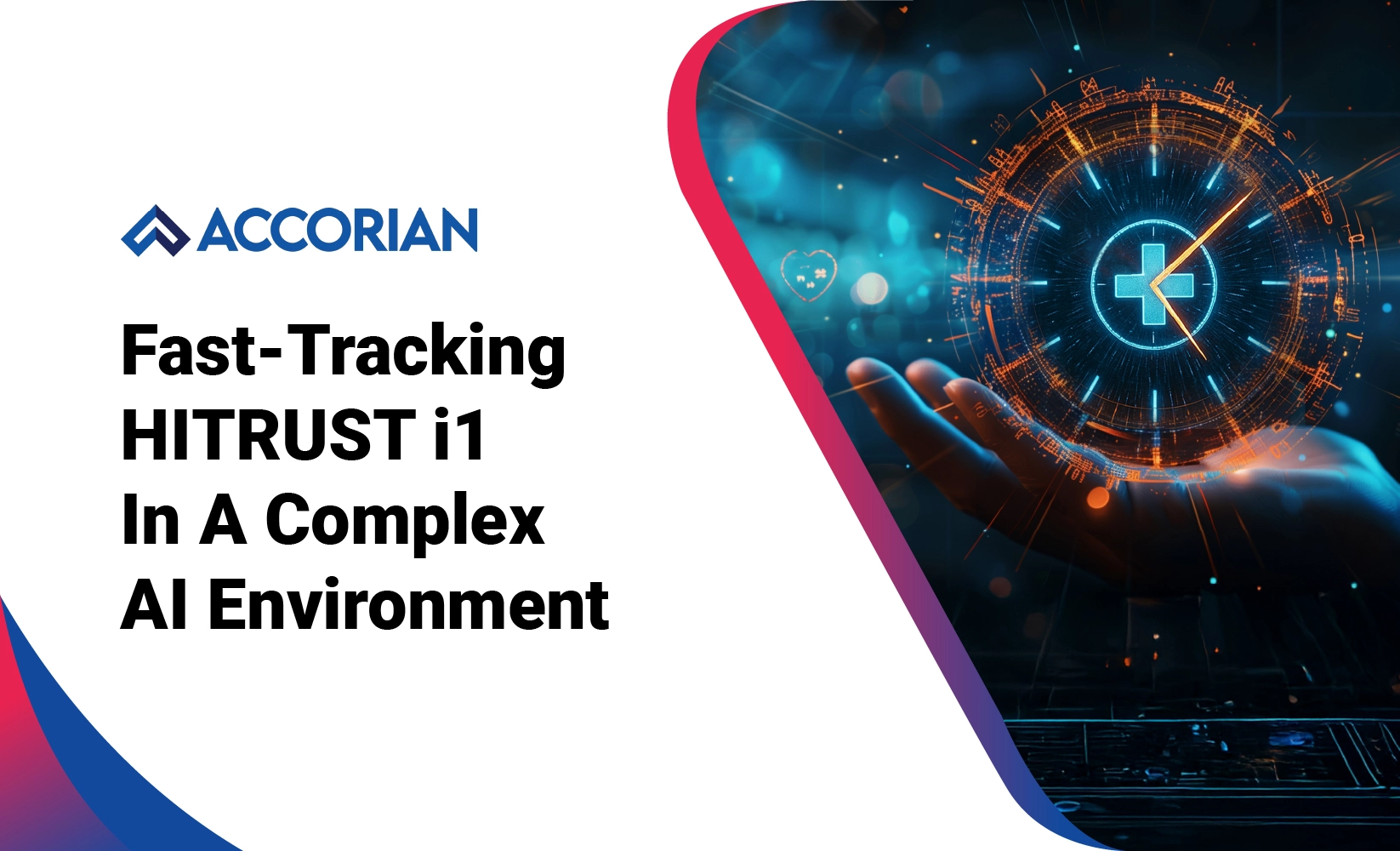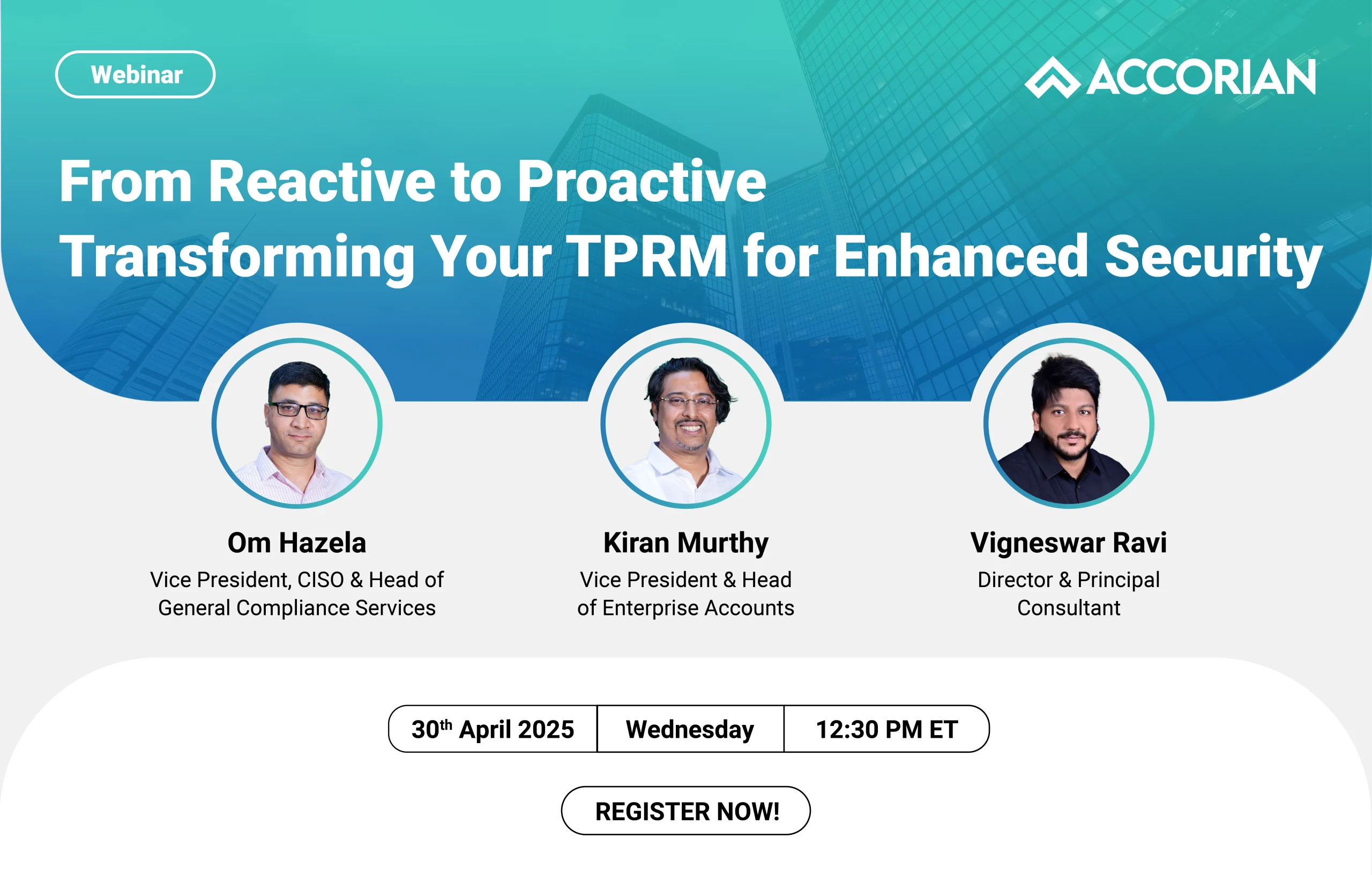Third-Party Risk Management (TPRM)
TPRM is the systematic process of identifying, assessing, and managing risks associated with an organization’s relationships with third-party vendors, suppliers, contractors, or service providers. These external entities often have access to sensitive information and critical systems or perform pivotal functions on behalf of the organization. Hence, understanding and mitigating potential risks arising from these partnerships are imperative for maintaining operational resilience and safeguarding the organization’s reputation. Accorian has a proven track record as a leading cybersecurity and compliance firm, helping organizations navigate their information security journey. With personalized questionnaires for effective scoring and reporting, our TPRM services streamline vendor risk assessments throughout the whole vendor lifecycle.
01
Reduces Financial Risk
Engaging with third-party vendors or service providers inherently entails financial risks. For instance, if a vendor encounters financial instability, undergoes bankruptcy proceedings, or fails to fulfill contractual obligations, the organization can have severe financial repercussions. Therefore, organizations must employ a Third-Party Risk Management framework to mitigate these risks.
02
Enhances Data Security
Third-party relationships often involve sharing sensitive data or intellectual property. A vendor breach of confidentiality can result in adverse consequences such as data exposure, intellectual property theft, or violations of confidentiality agreements. Implementing rigorous TPRM enables organizations to thoroughly assess a vendor’s data security measures and ensure compliance with data protection regulations.
03
Safeguards Reputation
A third-party vendor’s actions or misconduct can substantially impact an organization’s reputation. If a vendor engages in unethical practices or scandals, the organization’s image can be tarnished through association. TPRM practices assist in vendor risk assessment, safeguarding the organization’s reputation.
04
Mitigates Regulatory Risk
Non-compliance with applicable laws, regulations, or industry standards by a third-party vendor can lead to legal and regulatory consequences for the organization. TPRM enables organizations to assess a vendor’s compliance practices. This assessment ensures that vendors adhere to relevant laws and regulations, effectively reducing regulatory risks for the organization.
Third-Party Risk Management Process
Risk Identification
It involves identifying the organization’s third-party relationships and a comprehensive understanding of the scope of their engagement. This process includes assessing the criticality of the services or products third-party offers.
Risk Assessment
A comprehensive risk assessment is conducted once third-party relationships are identified. This assessment evaluates various factors, including financial stability, cybersecurity practices, data privacy measures, compliance with regulatory requirements, the efficacy of business continuity plans, geographical location, and reputation. This process may encompass questionnaires, on-site visits, interviews, and a review of audits or certifications.
Incident Response Planning
A crucial element of 3rd party risk management involves establishing a well-defined incident response plan and outlining the procedures for addressing potential security incidents or breaches involving third parties.
Remediation & Mitigation
If any risks are identified during the TPRM process, remediation and mitigation strategies are promptly executed to address the concerns.
Ongoing Monitoring
Continuous monitoring ensures that third-party vendors consistently uphold the established security and compliance standards throughout the relationship.
Continuous Reporting & Communication
Maintaining regular communication and reporting with the pertinent stakeholders and executive management board regarding the organization’s holistic risk exposure to third-party relationships is imperative.
About GoRICO
GoRICO is a unified platform solution meticulously crafted to assist modern technology-driven enterprises in comprehending, fortifying, overseeing, and upholding their true security posture. Our solution offers user-friendly metrics driven by seamless integrations, process optimizations, and automated delegation, resulting in substantial time saving for security personnel and risk owners.
Furthermore, GoRICO goes beyond the scope of one-time certification, emphasizing continuous, secure operations, and unwavering compliance adherence. We are dedicated to providing a comprehensive understanding of your true security compliance, maturity, and posture, empowering you to sustain a resilient and secure environment over the long term.
Accorian’s TPRM Methodology
L1 Assessment
This process ensures an initial understanding of the Vendor/Third-Party security practices, providing a solid foundation for subsequent evaluations in the L2 assessment
Client Onboarding
In the initial phase, the Vendor/Third-Party are introduced to the GoRICO platform & engage in a questionnaire assessment that comprehensively evaluates their security posture. This includes an examination of third-party certifications, risk assessments, information security programs, vulnerability assessments, business continuity measures, & other aspects.
Designated Single Point of Contact (SPOC)
Accorian assigns a dedicated Single Point of Contact (SPOC) to oversee the assessment process. The SPOC plays a crucial role in coordinating all assessment activities, ensuring the active participation of relevant parties, and ensuring the assessment proceeds smoothly.
GoRICO Assessment
The designated SPOC receives the GoRICO assessment and is responsible for responding to the questionnaire. They provide ‘yes’ or ‘no’ responses and offer relevant comments or explanations where necessary.
Response Timeframe
Vendors and third parties are allotted two weeks to complete and submit their assessments.
Assessment Review
Accorian thoroughly reviews once the assessments are submitted. This process involves validating the evidence presented and considering any comments or explanations provided by the vendor or third party.
L2 Assessment
This process ensures that every assessment aspect, discussion, and documentation is thoroughly reviewed. The outcome is a comprehensive understanding of the vendor’s or third party’s security capabilities, facilitating informed decision-making regarding their suitability as partners or service providers.
Validation of L1 Assessment
Following the successful validation of the L1 assessment, Accorian proceeds to the L2 assessment stage.
Addressing Incomplete or Improper Responses
Accorian focuses on rectifying any incomplete or incorrect responses identified during the L1 assessment. The goal is to ensure that all essential information is accurately captured.
Discussion Arrangements
Accorian initiates communication by scheduling dedicated calls. These discussions primarily revolve around remaining information security (infosec) topics or the need for specific evidence.
Vendor/Third Party Obligations
Vendors or third parties must furnish the necessary evidence within a stipulated timeframe, typically one week. This evidence is critical in substantiating their security claims and fortifying the overall assessment.
Evidence Validation
Accorian undertakes a comprehensive validation process upon receipt of the submitted evidence. The objective is to meticulously verify the credibility and accuracy of the provided evidence.
L2 Assessment Report
Accorian prepares a comprehensive L2 assessment report, which is subsequently shared with the vendors or third parties. This report offers an exhaustive analysis of their security posture, highlighting strengths and weaknesses. The assessment report employs a structured rating framework categorized into 5 parameters: Poor, Fair, Emerging/Reasonable, Good and Very Good.
Why Choose Accorian?
Accorian is a leading cybersecurity and compliance firm with a wealth of experience to help navigate organizations on their information security journey. Our comprehensive TPRM services streamline vendor risk assessments, covering every aspect of the vendor lifecycle. With a dedicated team, we facilitate the creation of custom questionnaires, ensuring efficient scoring and reporting. Furthermore, our services, including HITRUST, HIPAA, PCI, ISO, NIST, Incident Response, Risk Assessment, Penetration Testing, vCISO, and Red Teaming, reflect our commitment to providing comprehensive solutions tailored to specific regulatory needs.
At Accorian, our Third-Party Risk Management services are designed to identify and mitigate risks associated with your vendors and partners. By thoroughly assessing third-party relationships, we uncover potential vulnerabilities and ensure compliance with industry standards. Our comprehensive findings and tailored recommendations help clients strengthen their risk management strategies, ensuring robust protection against evolving threats.






